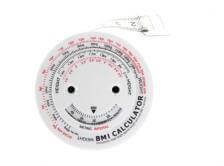The Perils of Being Skinny-Fat
Nutrition Diva explains how BMI can be misleading and why the skinny fat body type isn’t healthy.
Q. “My BMI is in the healthy range but my body fat is extremely high—around 34%. I’m tall and slim-looking, but somewhat flabby. What am I doing wrong? If I am overeating, wouldn’t I be overweight?”
Answer. You’ve put your finger right on one of the limitations of the Body Mass Index as a health indicator. The BMI is a quick-and-dirty index for whether your weight is appropriate for your height. (You can calculate your BMI here.) A BMI of 18-25 is considered “normal weight,” but there are situations where it can be misleading.
Muscle is a lot heavier than fat. As a result, people who have a lot of muscle, such as athletes or bodybuilders, can have a BMI that’s technically in the obese range. However, they are not obese, nor are they unhealthy. On the other end of the spectrum is the body type known as “skinny-fat.” Although their BMI registers in the normal range, these folks have a high percentage of body fat and a low percentage of lean muscle tissue. They aren’t technically overweight but they are over-fat.
Although you might be might be rocking those skinny jeans, being “skinny-fat” is not healthy. In fact, it turns out people with this body type have disease risks similar to those who are more obviously overweight.
But there is good news. Rather than cutting back on calories to lose the fat (not that much fun), your best bet is to increase your physical activity in order to build up some muscle (way more fun).
Weight-calculating tool from Shutterstock



